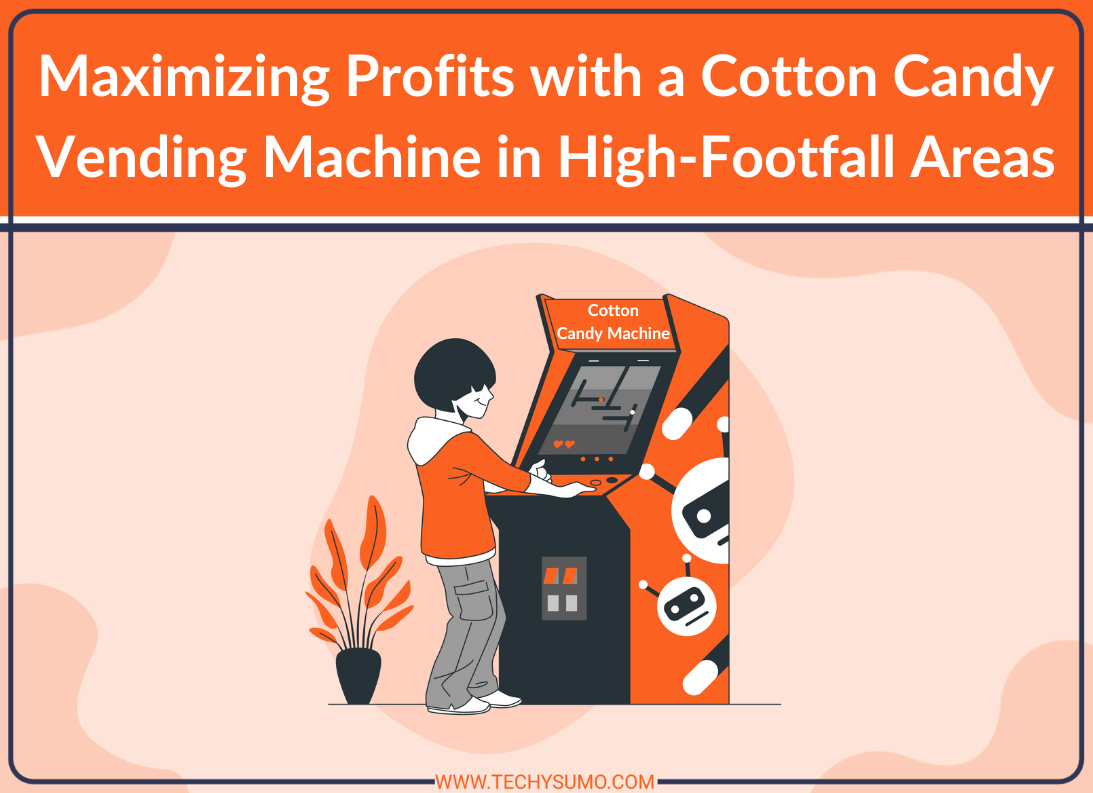There’s something about cotton candy that grabs attention. Maybe it’s the spinning sugar, maybe it’s the bright colors, or maybe it’s the simple fact that it’s a treat most people remember from childhood. Now imagine all of that only automated, behind a glass panel, in the middle of a busy arcade or mall. You don’t need a vendor shouting or waving people over. The machine does the job just by existing.
It’s this ability to stop people in their tracks that makes cotton candy machines a quiet powerhouse when it comes to generating revenue. You’re not just selling a product you’re offering a brief experience, a smile-inducing moment, usually to families or kids. And yes, people are more than happy to pay for that kind of joy.
Still, just setting up a Custom Vending machine isn’t enough. Where you place it, how you manage it, and how you present it all have a serious impact on whether you make a few bucks a day or end up with a line of eager kids and a machine that barely keeps up.
Where You Put It Makes or Breaks It
The assumption a lot of people make is that any high-traffic spot will work. Sure, more people walking by means more eyeballs on your machine but that doesn’t mean they’ll buy. What really matters is whether the people passing by are likely to be in the mood for a treat. That’s where context comes in.
Take a mall, for example. Not every hallway is created equal. A cotton candy vending machine near a toy store or next to a children’s play area will do better than one outside a department store. Why? Because kids are already excited, already energized, and the machine fits right into that moment. The same goes for places like arcades, cinemas, and airports. When people are in wait mode waiting for a movie, a flight, or their turn at the bowling alley they’re far more open to impulse buys.
Also Read
Let’s be real adults rarely buy cotton candy just for themselves. It’s usually a reward, a treat, a quick way to say yes to a child who’s been good. That’s why you need your machine in places where families spend time. High energy, lots of movement, not too rushed. Think waiting areas, entrances, and exits anywhere people slow down or stop long enough to notice what’s around them.
Seasonality matters, too. You’ll do more business in summer than in winter, sure, but even that depends on where your machine is. In a busy indoor space like a mall or family center, cold weather won’t stop sales. If your machine is visible and fun, it’ll still draw people in, even if there’s snow outside.
The Machine Isn’t the Business You Are
The vending machine doesn’t make money on its own. Not really. It needs you to treat it like an actual business, not just a gadget you plug in and forget. The most successful operators are the ones who check in regularly, keep things fresh, and actually pay attention to how their machine is performing.
Choosing the right machine helps. Some, like Sweet Robo, are designed to make life easier. They’ll send updates to your phone or dashboard, letting you know when supplies are running low or if the system needs attention. That alone can save you from losing days of sales just because you didn’t know the sugar bin was empty.
But there’s more to it than just keeping things running. Appearance counts for a lot. A machine with bright colors, clean glass, and a design that catches the eye will always do better than one that looks dusty or dull. The outside matters almost as much as the inside. If you’re near a waterpark, make it look summery. If you’re in a movie theater, maybe a movie-themed wrap makes sense. It doesn’t take much to stand out but you do have to try.
Then there’s pricing. You’re not trying to squeeze every dollar out of one cone you’re playing the volume game. A price point that sits comfortably between fun and affordable, usually in the $3–$5 range, tends to hit the sweet spot. People don’t hesitate much at that level, especially when they’re buying for kids. The more hesitation, the fewer impulse purchases you’ll get.
Some operators also find success by giving customers a reason to come back. A little sign with a QR code that links to a loyalty punch card? Simple but effective. Or maybe a seasonal flavor rotation something new for people to try each month. These small touches build momentum over time.
There’s no big secret to it. What works is visibility, simplicity, and a little creativity. You keep the machine stocked. You make sure it looks fun. You adjust when something isn’t selling. And then, over time, the machine starts to feel like it belongs there like it’s part of the place. That’s when you really start to see steady income, week after week.
This isn’t about selling sugar. It’s about selling an easy win for parents, a moment of happiness for kids, and a low-effort business for you. If you put the time into setting it up right, it can pay you back every single day. You’re not just offering cotton candy. You’re offering a mini-experience something people remember and come back to.
And the best part? You don’t have to be there to sell it. The machine does the spinning. The customer does the smiling. And you get the income.






